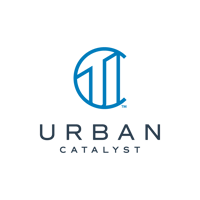This update provides a summary of the legislation and its implications, particularly as it relates to Urban Catalyst and the Downtown San Jose census tract where our current Opportunity Zone fund is located.
Legislative Timeline
- 5/22/2025 – House passes H.R. 1 which would renew Opportunity Zones through 2033.
- 6/16/2025 – Senate releases amended H.R. 1, which would renew Opportunity Zones permanently.
- 6/28/2025 – OZ 2.0 language modified further to include rolling five-year deferrals.
- 7/1/2025 – Senate passes H.R. 1, 51–50 (with VP Vance breaking the tie).
- 7/3/2025 – House passes H.R. 1, 218–214.
- 7/4/2025 – President Trump signs bill into law during Independence Day ceremony.
Next Milestones to Watch
- 7/1/2026 – States begin determining new OZ tracts.
- 10/29/2026 (approx.) – Unofficial OZ 2.0 map expected.
- 12/28/2026 (approx.) – Official OZ 2.0 map expected.
- 1/1/2027 – New zones become active.
- 2027 Tax Season – Enhanced fund reporting takes effect.
Summary of Legislative Changes
- Program Permanence and Zone Redesignation
The Opportunity Zone program is now a permanent part of the federal tax code. New tracts will be selected every 10 years beginning July 1, 2026, with the updated map going into effect on January 1, 2027. - Changes to Deferral and Basis Step-Up
Investments made after December 31, 2026, will be eligible for a five-year deferral of capital gains and a 10% basis increase after five years. - Rural Investment Incentives
Qualifying rural zones will receive a 30% basis increase and a lowered improvement threshold of 50% for existing buildings. - Stricter Tract Eligibility Requirements
The legislation removes the “contiguous tract” exception and narrows the definition of a low-income community. As a result, approximately 22% of currently designated OZs—including Downtown San Jose—are not expected to qualify in 2027. - Increased Transparency and Compliance
Expanded annual reporting requirements for Qualified Opportunity Funds begin with the 2027 tax year.
Implications for Urban Catalyst
Impact on Current Fund
Urban Catalyst’s current Opportunity Zone fund operates under the original OZ rules and is not impacted by the new legislation. The changes do not apply retroactively and do not extend current deferral deadlines. The December 31, 2026, capital gain recognition date remains in place.
Downtown San Jose Tract Status
Downtown San Jose was originally designated through a provision, the contiguous-tract carve-out, that allowed adjacent tracts with higher economic indicators to participate. Since the program’s inception, the area has demonstrated strong fundamentals, including major infrastructure investments, public and private development, and access to regional transit.
While future Opportunity Zones may increasingly reflect areas with greater economic need, Urban Catalyst’s current fund is fully grandfathered under the original legislation and continues to operate according to those terms. The updated eligibility criteria reinforce what has been true since the beginning of the program: Downtown San Jose has remained an economically strong area that no longer meets the thresholds for future OZ designation.
Industry Considerations
- Proposals for retroactive deferral extensions and inclusion of non-gain capital were not included in the final bill.
- OZ activity may temporarily slow in 2026 as the market transitions to the new map.
- Final tract designations will be determined by states beginning in July 2026 and finalized by the end of the year.
Final Thoughts
Although the Opportunity Zone landscape is evolving, Urban Catalyst’s current fund remains positioned in a location that has consistently demonstrated favorable characteristics for long-term investment. With the program now permanently extended and the map set to change, the current OZ fund may offer a unique opportunity that will not be available under the next iteration of the program.
Contact us to find out more about our Opportunity Zone Fund in Downtown San Jose!
Important Disclosures
The contents of this communication: (i) do not constitute an offer of securities or a solicitation of an offer to buy securities, (ii) offers can be made only by the confidential Private Placement Memorandum (the “PPM”) which is available upon request, (iii) do not and cannot replace the PPM and is qualified in its entirety by the PPM, and (iv) may not be relied upon in making an investment decision related to any investment offering by an issuer, or any affiliate, or partner thereof ("Issuer").
All potential investors must read the PPM and no person may invest without acknowledging receipt and complete review of the PPM.
With respect to any performance levels outlined herein, these do not constitute a promise of performance, nor is there any assurance that the investment objectives of any program will be attained. All investments carry the risk of loss of some or all of the principal invested. Assumptions are more fully outlined in the Offering Documents/ PPM for the respective offering. Consult the PPM for investment conditions, risk factors, minimum requirements, fees and expenses and other pertinent information with respect to any investment.
These investment opportunities have not been registered under the Securities Act of 1933 and are being offered pursuant to an exemption therefrom and from applicable state securities laws. All offerings are intended only for accredited investors unless otherwise specified.
Past performance are no guarantee of future results. All information is subject to change. You should always consult a tax professional prior to investing. Investment offerings and investment decisions may only be made on the basis of a confidential private placement memorandum issued by Issuer, or one of its partner/issuers. Issuer does not warrant the accuracy or completeness of the information contained herein. Thank you for your cooperation.
Real Estate Risk Disclosure:
- There is no guarantee that any strategy will be successful or achieve investment objectives including, among other things, profits, distributions, tax benefits, exit strategy, etc.;
- Potential for property value loss – All real estate investments have the potential to lose value during the life of the investments;
- Change of tax status – The income stream and depreciation schedule for any investment property may affect the property owner’s income bracket and/or tax status. An unfavorable tax ruling may cancel deferral of capital gains and result in immediate tax liabilities;
- Potential for foreclosure – All financed real estate investments have potential for foreclosure;
- Illiquidity – These assets are commonly offered through private placement offerings and are illiquid securities. There is no secondary market for these investments.
- Reduction or Elimination of Monthly Cash Flow Distributions – Like any investment in real estate, if a property unexpectedly loses tenants or sustains substantial damage, there is potential for suspension of cash flow distributions;
- Impact of fees/expenses – Costs associated with the transaction may impact investors’ returns and may outweigh the tax benefits
- Stated tax benefits – Any stated tax benefits are not guaranteed and are subject to changes in the tax code. Speak to your tax professional prior to investing.
Opportunity Zone Disclosures
- Investing in opportunity zones is speculative. Opportunity zones are newly formed entities with no operating history. There is no assurance of investment return, property appreciation, or profits. The ability to resell the fund’s underlying investment properties or businesses is not guaranteed. Investing in opportunity zone funds may involve a higher level of risk than investing in other established real estate offerings.
- Long-term investment. Opportunity zone funds have illiquid underlying investments that may not be easy to sell and the return of capital and realization of gains, if any, from an investment will generally occur only upon the partial or complete disposition or refinancing of such investments.
- Limited secondary market for redemption. Although secondary markets may provide a liquidity option in limited circumstances, the amount you will receive typically is discounted to current valuations.
- Difficult valuation assessment. The portfolio holdings in opportunity zone funds may be difficult to value because financial markets or exchanges do not usually quote or trade the holdings. As such, market prices for most of a fund’s holdings will not be readily available.
- Capital call default consequences. Meeting capital calls to provide managers with the pledged capital is a contractual obligation of each investor. Failure to meet this requirement in a timely manner could elicit significant adverse consequences, including, without limitation, the forfeiture of your interest in the fund.
- Opportunity zone funds may use leverage in connection with certain investments or participate in investments with highly leveraged capital structures. Leverage involves a high degree of financial risk and may increase the exposure of such investments to factors such as rising interest rates, downturns in the economy or deterioration in the condition of the assets underlying such investments.
- Unregistered investment. As with other unregistered investments, the regulatory protections of the Investment Company Act of 1940 are not available with unregistered securities.
- It is possible, due to tax, regulatory, or investment decisions, that a fund, or its investors, are unable realize any tax benefits. You should evaluate the merits of the underlying investment and not solely invest in an opportunity zone fund for any potential tax advantage.
The above material cannot be altered, revised, and/or modified without the express written consent of Urban Catalyst.


